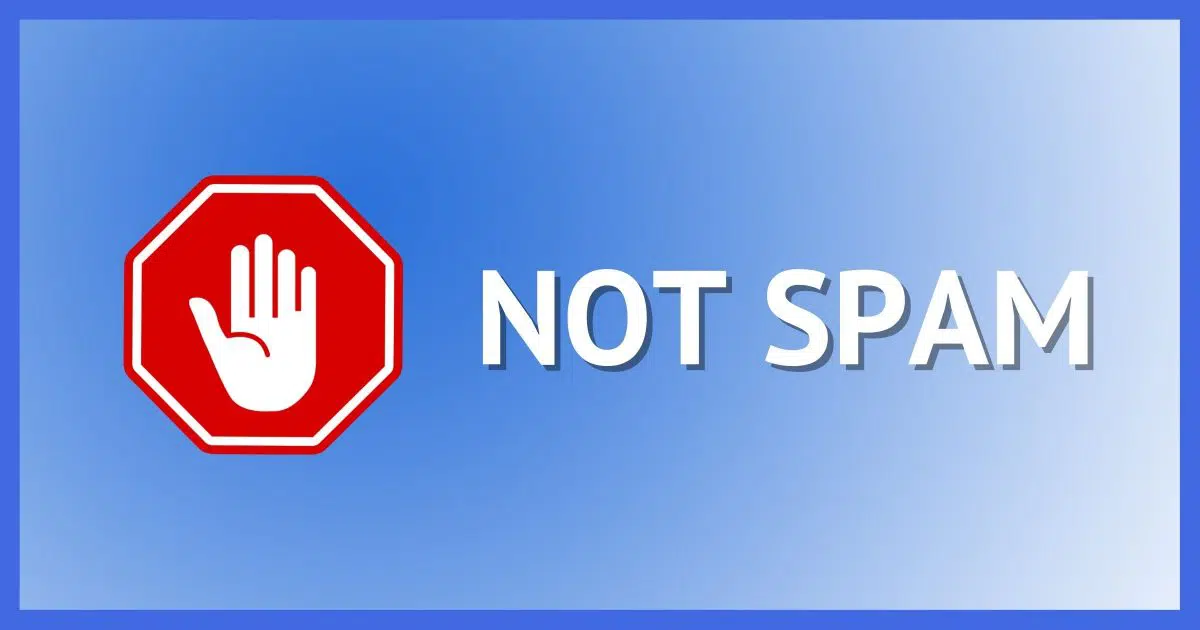It’s all about spam, and getting your newsletter delivered.

“Spring cleaning” is very simple: roughly sometime each spring I pro-actively unsubscribe email addresses from Ask Leo!’s Confident Computing newsletter who meet a couple of criteria:
- They’ve been subscribers since before the beginning of the year.
- They’ve not opened a newsletter or clicked on a link since the beginning of the year.
If it looks like you fell into that category, then might be unsubscribed.
A 99.99% successful process
99.99% of the time, the folks unsubscribed never notice. And it should be clear why: they weren’t bothering to read the newsletter, so they didn’t notice when it stopped.
The problem is that 0.01%. As I’ve discussed many times before, it’s impossible to tell that an email has been opened with 100% accuracy. A few people slip through the cracks — people who have been reading the newsletter, but for whom I’ve not been able to know that.
How do I know who reads the newsletter? Two things:
- Each newsletter has at least one image in it – the logo at the top. If you allow images to be displayed, then when you view the newsletter, the logo is fetched, and I know you opened the newsletter.
- The links in the newsletter that go to askleo.com include additional information letting me know it’s you. Click on any of those links to go to Ask Leo!, and not only do I know you visited the site, but I know you had to open the newsletter to do it.
Sometimes, for various reasons (I suspect security & privacy software), both methods fail.
WHY?
So, why do I do Spring cleaning?
In a word: spam. Or, more correctly, to decrease the odds the newsletter will end up in the spam folder for those people who do want it.
Fighting spam has become inconceivably complex. Mail services like Gmail, Hotmail, Yahoo and many others use many, many signals to determine what is and is not spam. One of those signals is “how many people bother to open this email?”. The fewer people that open it, the more likely it is to be spam – or at least something people don’t seem to want.
By removing those subscribers who aren’t opening the newsletter anyway, the “open rate”, and the overall reputation of the newsletter in the eyes of the mail services, goes up.
And more people who do open and read the newsletter get it without having to rescue it from their spam folder, or worse.
Unfortunately, as we’ve seen, there’s sometimes a very small amount of collateral damage.

I have my email program block remote images, but I’ve instructed it to download remote images from sites I trust like Ask Leo!. It may be that some people have the images blocked but still read the newsletter. It’s extremely rare that someone who reads the newsletter and doesn’t click on at least one link in a year. That might account of the .01% of the false negatives. That’s about one in ten thousand who notice.
Anyone receiving Ask Leo, who doesn’t read it, well, I won’t be judgemental. Thank You to Leo and his team for stuff that has saved my bacon several times. And given me a few necessary laughs!
I’d be interested to know how email clients factor into this. I use Thunderbird and, for all intents, practically never use Gmail directly. When a client connects for a download how is that treated by the host? Does this appear to be a ‘read’ action and get swept into the 99.99% or not? Curious.
Getting the email does nothing.
Loading pictures is what’s important.
After that, actually clicking on a link.
I’m glad that you are being proactive about updating your subscriber list, especially since spam filtering is kind of hit or miss. I’ve had at least one newsletter that I always open flagged with the banner “we think this is spam” by my email provider, while every day I’m getting spam in my inbox, with obviously spoofed ‘from’ addresses, and when I mark it spam I always get the ‘unsubscribe’ prompt. I suppose that’s just part of the never-ending arms race between spammers and spam filters.
I am not computer savvy but do appreciate reading your newsletter. I do get some info that I think might help me. Always appreciated and acknowledge. Thank you Leo
I find Leo’s blog very helpful. I have been reading it for some years now.
Just a note to say thank you for your work.
Leo, thank you for these helpful articles. I am no computer expert but have found your articles to be helpful and very informative. My curiosity is now satisfied after reading this article explaining how you spring clean your subscriber list.
One type of newsletter link that you should
make sure to monitor, are the “reply” links — both for the article in general as well as for the individual posters.
Just for an example, this reply should keep me safe for the rest of the year… but will it? 😮
“They’ve not opened a newsletter or clicked on a link since the beginning of the year.” Just FYI, some of us work differently. To me, an email notification from AskLeo is just a reminder. When I have time I go directly to your website in a browser, on a computer, typing in “newsletter.askleo.com”. When I do this, I’m never logged into in any email account or any online account. From your perspective, I’m someone who has accidentally come across an askleo link searching with Google.